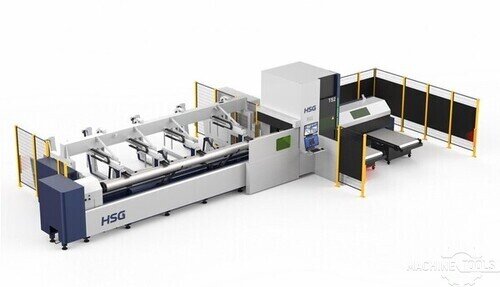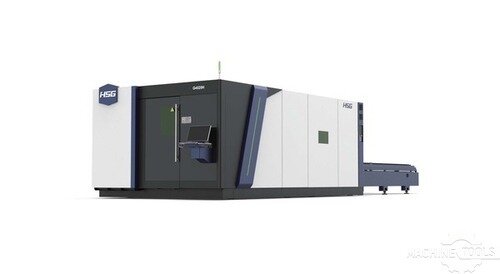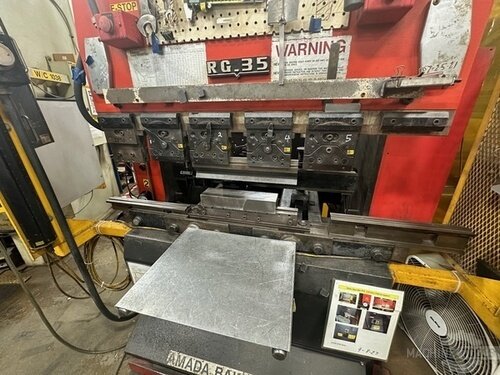Investing in fiber laser technology can be a game-changer for businesses in the metal fabrication industry. With advancements in precision, speed, and efficiency, fiber lasers offer a compelling case for modernizing your operations. This article delves into the essential features and business benefits of fiber laser investment, providing a comprehensive guide to help you make an informed decision.
Understanding Fiber Laser Technology: A Primer
Fiber laser technology represents a significant leap forward in the field of laser cutting and engraving. Unlike traditional CO2 lasers, fiber lasers use optical fibers doped with rare-earth elements to generate a high-intensity laser beam. This results in a more efficient and precise cutting process, capable of handling a wide range of materials, including metals, plastics, and composites.
One of the key advantages of fiber lasers is their high electrical efficiency. They convert a larger percentage of electrical power into laser light, reducing energy consumption and operational costs. This makes them an environmentally friendly option, aligning with the growing emphasis on sustainable manufacturing practices.
Additionally, fiber lasers offer superior beam quality, which translates to finer cuts and higher precision. This is particularly beneficial for industries that require intricate designs and tight tolerances, such as aerospace, automotive, and medical device manufacturing. The ability to produce clean, precise cuts with minimal thermal distortion enhances the overall quality of the finished product.
Furthermore, fiber lasers are known for their low maintenance requirements. The solid-state design eliminates the need for mirrors and other moving parts, reducing the risk of mechanical failure. This reliability ensures consistent performance and minimizes downtime, allowing businesses to maintain high productivity levels.
Key Features of Modern Fiber Lasers
Modern fiber lasers come equipped with a range of features designed to enhance performance and user experience. One of the standout features is the high power output, with some models offering up to 20kW. This enables faster cutting speeds and the ability to handle thicker materials, increasing overall throughput.
Another important feature is the advanced control systems integrated into modern fiber lasers. These systems offer intuitive interfaces and automated functions, simplifying the operation and reducing the learning curve for new users. Features like auto-focus, real-time monitoring, and adaptive cutting parameters ensure optimal performance and consistent results.
Cooling systems are also a critical component of modern fiber lasers. Efficient cooling mechanisms prevent overheating and ensure stable operation, even during prolonged use. This not only extends the lifespan of the equipment but also maintains the quality of the laser beam, ensuring precise cuts throughout the production process.
Safety features are another crucial aspect of modern fiber lasers. Built-in safety mechanisms, such as protective enclosures and interlock systems, safeguard operators from potential hazards. Additionally, many models come with remote monitoring capabilities, allowing for real-time diagnostics and troubleshooting, further enhancing operational safety and efficiency.
HSG TS2 HIGH SPEED TUBE FIBER LASER CUTTING MACHINE
HSG 3015H 12KW
Business Benefits of Fiber Laser Investment
Investing in fiber laser technology offers numerous business benefits, starting with increased productivity. The high cutting speeds and precision of fiber lasers enable faster turnaround times, allowing businesses to take on more projects and meet tight deadlines. This boost in productivity can lead to higher revenue and improved customer satisfaction.
Cost savings are another significant benefit. The energy efficiency of fiber lasers reduces operational costs, while the low maintenance requirements minimize downtime and repair expenses. Additionally, the ability to cut a wide range of materials with a single machine reduces the need for multiple pieces of equipment, further lowering capital expenditures.
Fiber lasers also enhance the quality of the finished products. The precise cuts and minimal thermal distortion result in cleaner edges and fewer defects, reducing the need for secondary processing. This not only saves time and resources but also improves the overall quality and consistency of the products, enhancing the business’s reputation for excellence.
Moreover, fiber lasers offer flexibility and scalability. As your business grows, you can easily upgrade to higher power models or integrate additional features to meet increasing demands. This scalability ensures that your investment remains relevant and valuable over the long term, providing a solid foundation for future growth.
Maximizing ROI with Fiber Laser Technology
To maximize the return on investment (ROI) with fiber laser technology, it is essential to choose the right equipment and partner with a reliable supplier. Look for a supplier with a proven track record of providing high-quality products and exceptional after-sale service. This ensures that you receive the support and maintenance needed to keep your equipment running smoothly.
Implementing preventive maintenance programs is another key strategy for maximizing ROI. Regular maintenance checks and timely repairs can prevent costly breakdowns and extend the lifespan of your fiber laser. This proactive approach minimizes downtime and ensures consistent performance, allowing you to maintain high productivity levels.
Training and support are also crucial for maximizing ROI. Ensure that your team receives comprehensive training on the operation and maintenance of the fiber laser. This not only enhances their skills and confidence but also reduces the risk of errors and accidents. Additionally, having access to technical support and troubleshooting assistance can quickly resolve any issues that arise, minimizing disruptions to your operations.
Finally, consider the long-term benefits of fiber laser technology. While the initial investment may be significant, the cost savings, increased productivity, and improved product quality can quickly offset the expense. By carefully evaluating your needs and choosing the right equipment, you can achieve a substantial ROI and position your business for sustained success.
FAQ
What materials can fiber lasers cut?
Fiber lasers can cut a wide range of materials, including metals (such as steel, aluminum, and copper), plastics, composites, and more.
How do fiber lasers compare to CO2 lasers in terms of efficiency?
Fiber lasers are generally more efficient than CO2 lasers, converting a higher percentage of electrical power into laser light, which reduces energy consumption and operational costs.
What are the maintenance requirements for fiber lasers?
Fiber lasers have low maintenance requirements due to their solid-state design, which eliminates the need for mirrors and other moving parts. Regular preventive maintenance can further extend their lifespan and ensure consistent performance.
Can fiber lasers handle thick materials?
Yes, modern fiber lasers with high power outputs (up to 20kW) can handle thicker materials, making them suitable for a variety of industrial applications.
What safety features are included in modern fiber lasers?
Modern fiber lasers come with built-in safety mechanisms such as protective enclosures, interlock systems, and remote monitoring capabilities to ensure operator safety and efficient operation.
How can I maximize the ROI of my fiber laser investment?
To maximize ROI, choose the right equipment, implement preventive maintenance programs, provide comprehensive training for your team, and partner with a reliable supplier for ongoing support and service.
Is fiber laser technology scalable for growing businesses?
Yes, fiber laser technology is highly scalable. As your business grows, you can upgrade to higher power models or integrate additional features to meet increasing demands, ensuring long-term value and relevance.
Investing in fiber laser technology can transform your business, offering unparalleled precision, efficiency, and cost savings. By understanding the key features and benefits, you can make an informed decision that maximizes your ROI and positions your business for future growth. If you’re ready to explore the potential of fiber lasers for your operations, don’t hesitate to reach out for expert advice and support.
Get Weekly Mac-Tech News & Updates







